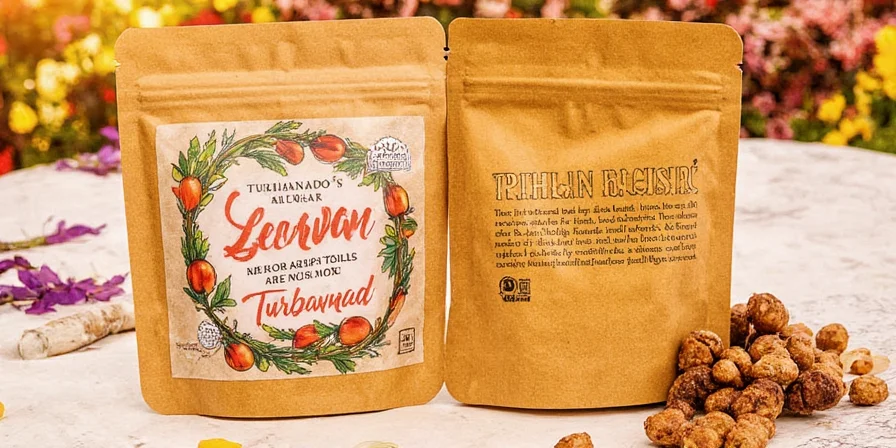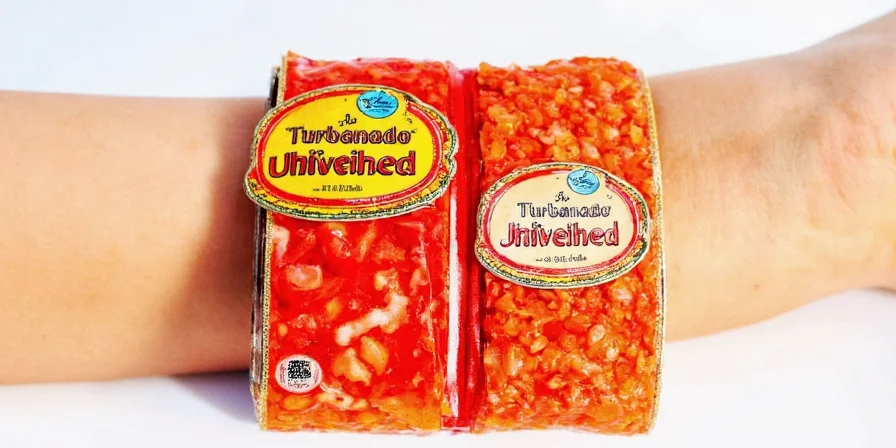Introduction: The Crystalline Charm of Turbanado Sugar
If you've ever mistaken turbanado sugar for just another brown sugar clone, it's time to think again. This golden-hued gem is not only a staple in spice-laden desserts but also an unsung hero in balancing flavor profiles across culinary applications. In this article, we're diving deep into the crystallized cosmos of turbanado sugar — serving up spice-infused sweetness, useful hacks, and a table that compares like never before.
Table of Contents
- What Is Turbanado Sugar, Anyway?
- The Great Brown Sugar Showdown: Turbanado vs. Muscovado vs. Demerara
- 5 Surprisingly Spicy Uses for Turbanado Sugar
- Pro Tips: Handling Turbanado Like a Seasoned Spice Alchemist
- Sweet & Savory Pairings: How Turbanado Can Steal the Flavor Spotlight
- The Science Behind the Sparkle: What Makes Turbanado So Unique?
- Conclusion: Turbanado Sugar – Not Just Another Pretty Crystal
What Is Turbanado Sugar, Anyway?
Figure 1: A close-up of raw turbanado sugar crystals.
Turbanado sugar, sometimes called "raw cane sugar," is made by crushing sugarcane, extracting the juice, and then partially refining it. Unlike regular white sugar, it retains some molasses content, giving it a light brown color and subtle caramel notes. However, compared to darker sugars like muscovado or jaggery, turbanado stays relatively dry and has larger, coarser grains.
The Raw Truth:
- Partially refined
- Coarse texture
- Mild molasses flavor
- Golden-brown appearance
The Great Brown Sugar Showdown
| Type | Molasses Content | Texture | Flavor Profile | Best Use |
|---|---|---|---|---|
| Turbanado | Low-Moderate | Coarse, Dry | Subtle caramel, earthy | Baking, Topping, Beverages |
| Muscovado | High | Moist, Sticky | Deep molasses, smoky | Rum cakes, Glazes, BBQ Sauces |
| Demerara | Moderate | Crunchy, Large Grains | Caramel, Nutty | Teas, Baked Goods |
Figure 2: Brown sugar comparison from left to right: demerara, turbanado, muscovado.
So, what makes turbanado stand out? It’s all about balance. It gives you enough molasses to add depth without being too overpowering — making it a versatile player on your spice rack.
5 Surprisingly Spicy Uses for Turbanado Sugar

Figure 3: A spiced cinnamon roll sprinkled with turbanado sugar before baking.
- Spice Rub Enhancer: Mix turbanado with smoked paprika, chili powder, and cumin for a rub that adds both heat and depth to grilled meats.
- Cookie Texture Game-Changer: Sprinkle turbanado on top of cookie dough before baking for a crackly finish that contrasts beautifully with soft centers.
- Coffee & Cocoa Booster: Stir it into your morning brew or cocoa for a richer mouthfeel and hint of caramel that standard brown sugar can’t match.
- Glazed Vegetable Perfection: Combine with soy sauce, ginger, and garlic for a glaze that sticks better than finer sugars and brings warmth to roasted veggies.
- Cheesecake Topping: Try it mixed with graham cracker crumbs for a crust that doesn't get soggy and adds a crunchy, aromatic layer.
Pro Tips: Handling Turbanado Like a Seasoned Spice Alchemist
Turbanado may look tough, but it still needs a little love to keep its sparkle alive. Here are five tips to keep it performing at its peak:
- Store it Right: Keep it in an airtight container away from moisture to avoid clumping.
- Softening Trick: If it hardens (yes, even turbanado can do this), place a slice of bread in the container overnight. Magic!
- Grind It: Want a finer texture? Pulse it in a food processor to create a lighter alternative to traditional brown sugar.
- Use it Cold: Ideal for cold drinks — unlike fine sugars, it won't dissolve too quickly and keeps adding flavor with every sip.
- Pair with Citrus: Its mild molasses pairs perfectly with orange zest or lemon juice in glazes or baked goods.
Figure 4: Proper storage ensures turbanado stays as crisp as your sense of humor.
Sweet & Savory Pairings: How Turbanado Can Steal the Flavor Spotlight
One of the most exciting things about turbanado is how well it plays with others. Whether you're sweetening a dessert or building a complex spice blend, here are pairings that make turbanado shine:
- Cardamom & Cinnamon: The warm spices highlight the caramel tones in turbanado, perfect for chai-spiced cakes.
- Paprika & Smoked Salt: When paired with these savory notes, turbanado creates a rounded depth in barbecue sauces.
- Lime Zest: Adds brightness to the earthiness, ideal for citrusy shortbreads or tropical cocktails.
- Black Pepper: The peppery kick complements the mellow molasses and adds contrast in spiced syrups.
- Ancho Chili Powder: Earthy heat meets subtle sweetness — great for mole-inspired dishes.

Figure 5: Flavor pairing chart for turbanado sugar with common spices.
The Science Behind the Sparkle: What Makes Turbanado So Unique?
Let’s geek out for a moment. Why does turbanado behave so differently from other sugars in the kitchen?
- Crystal Structure: Larger grains mean slower dissolution, ideal for topping pastries or drinks where you want lingering sweetness.
- Molasses Ratio: With around 3–5% molasses, it offers a hint of complexity without overwhelming the palate.
- Maillard Reaction Partner: During baking, turbanado contributes to browning and enhances crust formation due to its natural minerals.
- pH Level: Slightly acidic due to residual molasses, which affects how it interacts with leavening agents like baking soda.
In essence, turbanado isn’t just a pretty face — it’s a science experiment that tastes amazing.
Conclusion: Turbanado Sugar – Not Just Another Pretty Crystal
Whether you're a seasoned chef or a weekend baker with a penchant for spice exploration, turbanado sugar deserves a spot in your pantry. From its balanced flavor profile to its impressive versatility in both sweet and savory contexts, turbanado is the quiet achiever of the sugar world.
So next time you're eyeing that bag of brown sugar, consider grabbing turbanado instead. With the right application, it might just become your new secret weapon in crafting flavors that hit all the right notes — especially the spicy ones.










 浙公网安备
33010002000092号
浙公网安备
33010002000092号 浙B2-20120091-4
浙B2-20120091-4